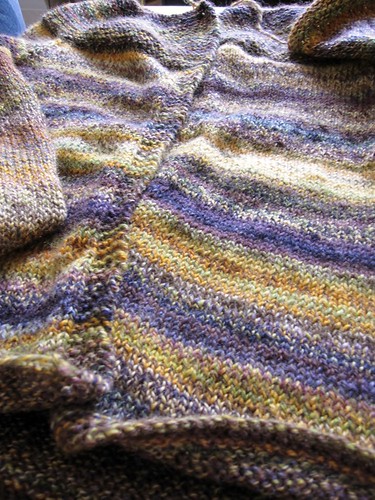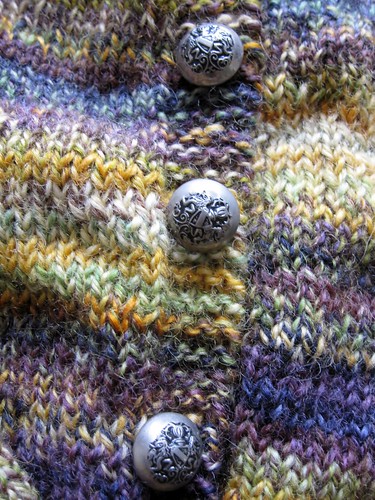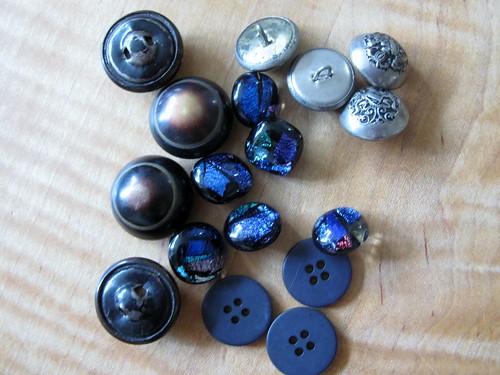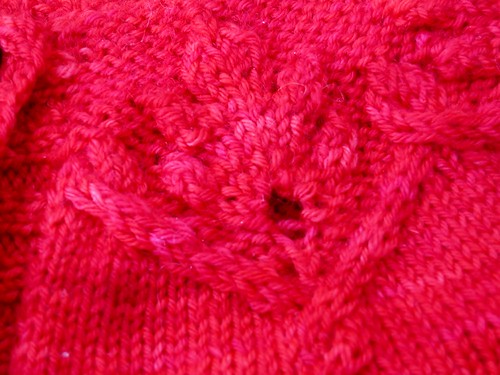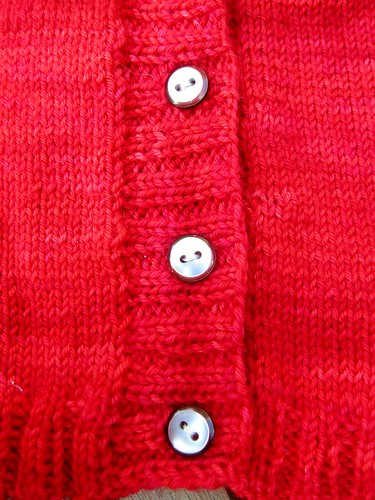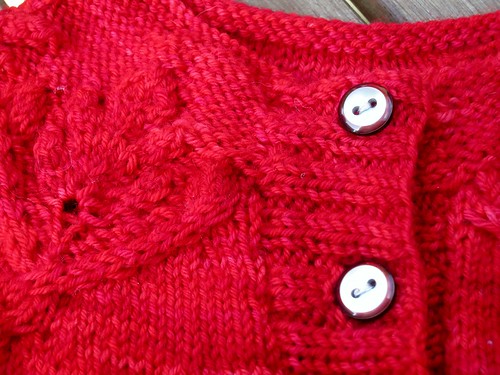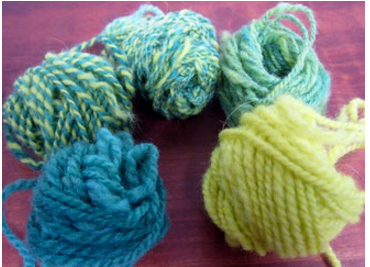This year's Tour de Fleece was an unparalleled success! I spun up 8 lbs of fiber, including 3 sweater lots and 2000 yds of lace weight!
Ha ha ha ha ha! Actually, I didn't meet my
TdF goal in any way, shape, or form. Here's the final output:
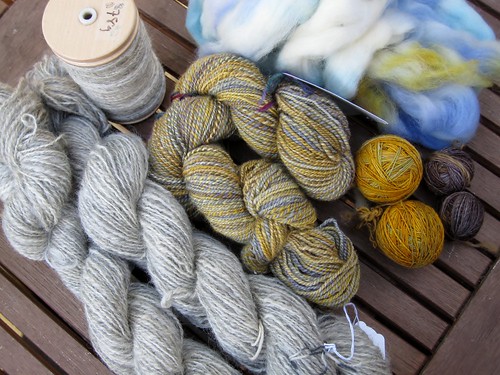
I ended up with two finished skeins and a bobbin and a half of singles of the Gotland fleece.

I'm pretty happy with the final yarn - it's definitely a bit "rustic", as you would expect from inexpertly handcard fiber, and it will definitely end up as an outerwear sweater rather then a next-to-skin cuddly sweater, but I like it. My goal for the weekend is to finish up the bobbin that's on the wheel and ply those up and see what my yardage is. Based on these first two skeins, I'm going to need 8 or 9 to get the yardage I need for the sweater. That shouldn't be a problem unless I get super sick of carding.
I didn't even touch the Hebridean rolags - they went missing! I had several weeks of panic because I couldn't find the box they were stored in, and I was convinced Himself had thrown them away in a fit of tidying. However, when unpacking boxes from the move, lo and behold there they were. Phew!
Since we were traveling, and life was a bit nuts with moving, I did a fair bit of spindling in addition to the fleece on the wheel. I just went in to my stash and pulled out some Hello Yarn fiber (because Adrian's genius makes up the bulk of my dyed spinning stash, and so I could post in their threads!) and threw it on the spindle.
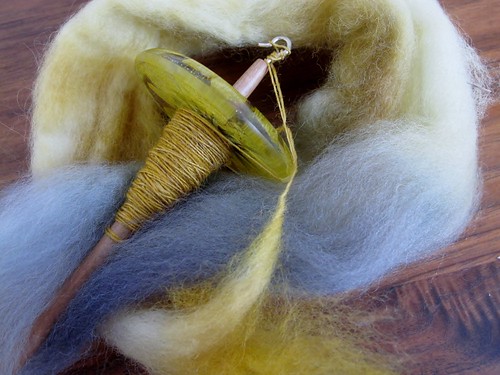

HY Burnished BFL, 2-ply, spun on a variety of spindles, 177 yds/4.4 oz (644 ypp). The colors on this are gorgeous - it really does look like metal. I think this will become a cowl or a hat or something like that. Maybe some simple mitts? Dunno.
I was planning on the BFL lasting through our trip to the Pyrenees, but I finished it before we left. Back to the HY stash for another spindle project.

This is Seasick Corriedale. I've got two bags of this (approximately 8 oz), so I took one bump, split it into the component colors (i.e. yellows, browns, blues), and then split each piece of top in half lengthwise for two singles.

Here you can see the yellow and brown singles in balls ready for plying. I used my
Wildcraft spindle for this fiber, and it was a bit tricky - the Corriedale wanted to be spun a bit thicker then is optimal for the weight of the spindle, which meant I had to be really careful about keeping the spindle going in the right direction - but I'm happy with the singles. I think this will end up being an aran or bulky weight 2-ply, once it's washed.
So there you have it: three weeks, about 550 yds of finished yarn, and a whole load of other stuff going on. So be it! At least all that spindling meant I got some good pictures...


So given that my Tour de Fleece was
an abject failure a bit underwhelming, my Ravellenic Games goals have to change as well. Now I'm thinking that I'll hope to finish the spinning of the fleece by the Closing Ceremonies. Then I can get to work on the sweater in September. Which works out well, to be fair, cause it's not really the best weather for rustic-heavy sweater knitting.
